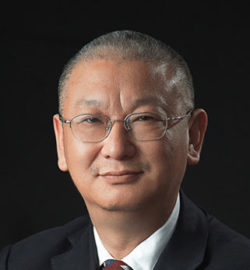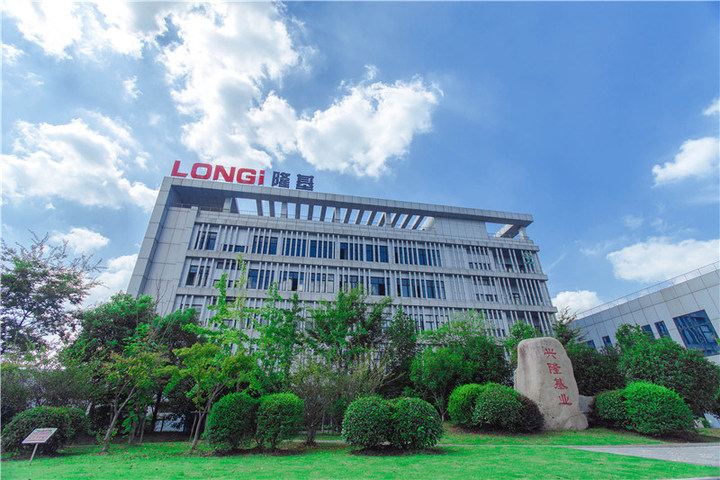Among global PV manufacturers, Longi Solar is perhaps the most dynamic. As the world’s largest producer of monocrystalline ingots and wafers, the company has grown at a stunning pace over the past five years, and now has also achieved a top-3 spot among global module makers.
pv magazine caught up with President Zhenguo Li at the recent Solar Power International trade show in Anaheim, California, where he gave his thoughts on a range of topics.
 pv magazine: Right after the SNEC trade show in May of this year many market participants were surprised by the new China central government policy to limit subsidy support for PV installations. What is Longi’s view of this new policy and how has the market changed since this policy was announced?
pv magazine: Right after the SNEC trade show in May of this year many market participants were surprised by the new China central government policy to limit subsidy support for PV installations. What is Longi’s view of this new policy and how has the market changed since this policy was announced?
Zhengou Li: Even without this 31/5 policy change, the market will not be that different than before. We can give you an example. The solar industry, is like most industries – once the industry gets mature, consolidation needs to happen. Meaning that the technology evolves.
The multi-wafer price collapsed before this policy change. So this new policy change caused short-term issues for most companies, including us. We will face the pressure of profit. But for the long term, it will not change our position in the industry.
pv magazine: Another question on policy: The European Commission recently announced its intention to discontinue the Minimum Import Price (MIP) for imported modules. How will this affect Longi’s business in Europe? What opportunities present themselves?
Li: This will have a positive impact. Longi has set up an ambitious target for the EU market. The removal of the MIP allows Longi to better serve the EU market by providing high performance new generation products that are currently manufactured in our China facilities. At the same time the removal of the MIP will also allow renewable energy costs to reduce dramatically. That will help motivate stronger market demand than expected.
pv magazine: When I spoke with you at Intersolar North America, you provided some thoughts on the market share that you expect for mono and multicrystalline silicon in 2018 and 2019. Have there been any developments in the last two months that have changed your perspective to any degree, and can you comment on the price trends that you are seeing for wafers?
Li: First off, it takes time to figure out the shift. Some projects were designed based on multicrystalline and they cannot change the module design. But today almost everyone realizes that mono is the future. So once people reach this conclusion, this change can happen really fast. I can give you an example based on diamond wire cutting. 2017 was the first year when diamond wire cutting was first adopted. By 2018, the percentage might be 40%. In 2022, diamond wire may be 100%.
That was the conclusion back in 2017. In reality, in 2018, diamond wire adoption is 100%. It happened faster than anyone expected. Today most people have reached the conclusion that mono will replace multi. So that will happen must faster in the next one or two years.
Popular content
The percentage of mono depend on the market scale and capacity. Next year we believe the mono wafer capacity will be anything between 70 to 80 GW. So if the market scale is only 100 GW, then let’s say mono will be 70%. If market goes beyond expectation to 150 GW, then multi & mono will be 50/50. Because we are temporarily limited by the supply of mono wafers.
pv magazine: Can you speak to the progress of capacity expansions? Are you on track to reach 25 GW of ingot and wafer production by the end of this year, and to reach 45 GW by the end of 2020?
Li: There is no change for our expansion progress. But to be exact, today we are already sitting at 25 GW. End of this year, wafer will be 28 GW. End of next year, 36 GW. End of 2020, 45 GW. That is the original plan. No change.
pv magazine: Moving to cell and module technology, is Longi still on track to produce 1 GW of bifacial modules this year, and what are your thoughts on future market shares of bifacial technology?
Li: Within 2-3 years, bifacial will be mainstream technology for utility projects. This year we will ship more than 1 GW bifacial modules. Next year we will have more than 10 GW supply capability of bifacial modules.
pv magazine: We were at Renewable Energy India recently. Can you update us on Longi’s plans to setup a 1 GW cell and module factory in Gujarat?
Li: In India, we bought the land, but we do not have material progress with the India project. Mainly because of two reasons. First is the uncertainty of this trade case in India and the manufacturing cost in India is much higher than in China. If they put a tariff, say, 50 years, no change, then maybe we can make the decision easier.
But a tariff like this is only two years.
The second is that the India government so far has not provided supportive policies for local manufacturing. So we have to take this wait and see approach.
This content is protected by copyright and may not be reused. If you want to cooperate with us and would like to reuse some of our content, please contact: editors@pv-magazine.com.


1 comment
By submitting this form you agree to pv magazine using your data for the purposes of publishing your comment.
Your personal data will only be disclosed or otherwise transmitted to third parties for the purposes of spam filtering or if this is necessary for technical maintenance of the website. Any other transfer to third parties will not take place unless this is justified on the basis of applicable data protection regulations or if pv magazine is legally obliged to do so.
You may revoke this consent at any time with effect for the future, in which case your personal data will be deleted immediately. Otherwise, your data will be deleted if pv magazine has processed your request or the purpose of data storage is fulfilled.
Further information on data privacy can be found in our Data Protection Policy.